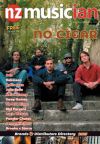Easy Hacks For Singer-Songwriter Guitarists
Easy Hacks For Singer-Songwriter Guitarists
Easy hacks for singer-songwriter guitarists – simple ways of making scales musical and creating hooklines: Hi there singer-songwriter types, I thought I’d like to show you some simple compositional ideas on how to make those boring scales sound musical and talk about creating melodic hooklines using just one string – and I promise it won’t damage your creativity at all!
There are few major name songwriter guitarists who use this technique – A Forest by Robert Smith from The Cure is a fantastic example. The Edge from U2 is another great fan of this style of playing.
All that you need you need to know is your alphabet up to G, and be able to count up to eight – or even better, if you can to 13 that would be cool. The first thing to learn is a C major scale up one string.
Here’s an easy way to construct a major scale using the following pattern of tones (two frets apart) and semitones (one fret apart). This is the pattern: Tone – Tone – Semitone – Tone – Tone -Tone – Semitone. See Exercise 1. As you can see I have put the note name and the corresponding scale degree number underneath.
Play Exercise 1: Say and play the note names and then the numbers.

C major scale along the 5th string.
Composition hack #1: (Melodic Cell technique)
Choose any four random numbers from 1 to 8. Don’t even think about touching your guitar, don’t even look at it. I was talking to my daughter when I was writing this and asked her to choose four numbers – she chose 7, 4, 1, 2.
When we apply those numbers to the C major scale shown in Ex. 1 we get the following notes: 7 = B, 4=F, 1=C, 2=D. Okay, it’s time now to play this on your gat – see Exercise 2.

4 random notes
Yep digging that, it’s got a bit of a Nine Inch Nails vibe. If you like putting a drum groove to play along with, something simple, some industrial garage band loop could be good to start with. I’m also going to strum the open D string for more of a NIN/indie vibe.
Right then, here’s an NIN/indie idea and I’ve just added an 8th note rock strum. Easy peasy. Remember the trick is to choose the four random numbers without playing, but it’s an easy way of coming up with a starting point for a song. Experiment and have fun.

Riff using the 4 notes
Composition hack #2: (Sequencing)
Sequencing is a predetermined number of notes from a scale played in order, eg. in one major scale where the number 1-2-3-4-5-6-7-8 represent the degrees of the scale. So an ascending pattern for sequenced 3s would look and sound like Exercise 4.

Sequence of 3s
Done that? Now let’s try out a hybrid sequencing approach: A sequence of 5’s followed by a sequence of 3’s.
1-2-3-4-5-2-3-4-3-4-5-6-7-4-5-6-5-6-7-8-9-6-7-8 make up your own sequence, be creative.

Sequence of 5s followed by 3s
Composition hack #3 (The intervallic approach)
The intervallic approach is based around intervals – an interval being the distance between two notes. For example an intervallic pattern of ascending 3rds would look & sound like this: 1-3-2-4-3-5-4-6-5-7-6-8-7-9-8-10 See Exercise 6, this is a really good vocal warm up exercise used by many awesome vocalists. (Sing & play.)

Ascending intervallic pattern of 3rds
The hybrid intervallic approach is one of my favourite composition hacks, great for coming up with interesting and unique ways of approaching chord progressions. It basically just means taking two or more intervals and combining them.
In Exercise 7 we will use an interval of a 5th followed by an interval of a 3rd. Here’s the pattern: 1-5-2-4-3-7-4-6-5-9-6-8-7-11-8-10. (Play & sing, go on.)

Finally, for this lesson, let’s use this approach in a common chord progression that we all know and love – yep the old I – V – VImin – IV in the key of C. The chords are C – G – Amin – F. Instead of playing the usual chord shapes we going to use the hybrid intervallic approach. So what we are going to do is, is take the root note from each of the chords and put intervals to them instead.
For the C chord use a 5th, for the G chord use a 3rd, for the Amin chord use a 5th, for the F chord use a 3rd. See Exercise 8 (Play & sing.)

C (using a 5th) G (using a 3rd) Amin(using a 5th) F(using a 3rd)
The possibilities are endless. Be a good muso and use the safe distancing rule and don’t lick ya friends’ mics or gats – eewww. See ya soon with another set of creative opportunities.
Johnny Fleury is a session muso who plays guitar, bass and Chapman stick. Until recently he taught applied music theory at MAINZ in Auckland. Check out MeaniePantsProductions.com

